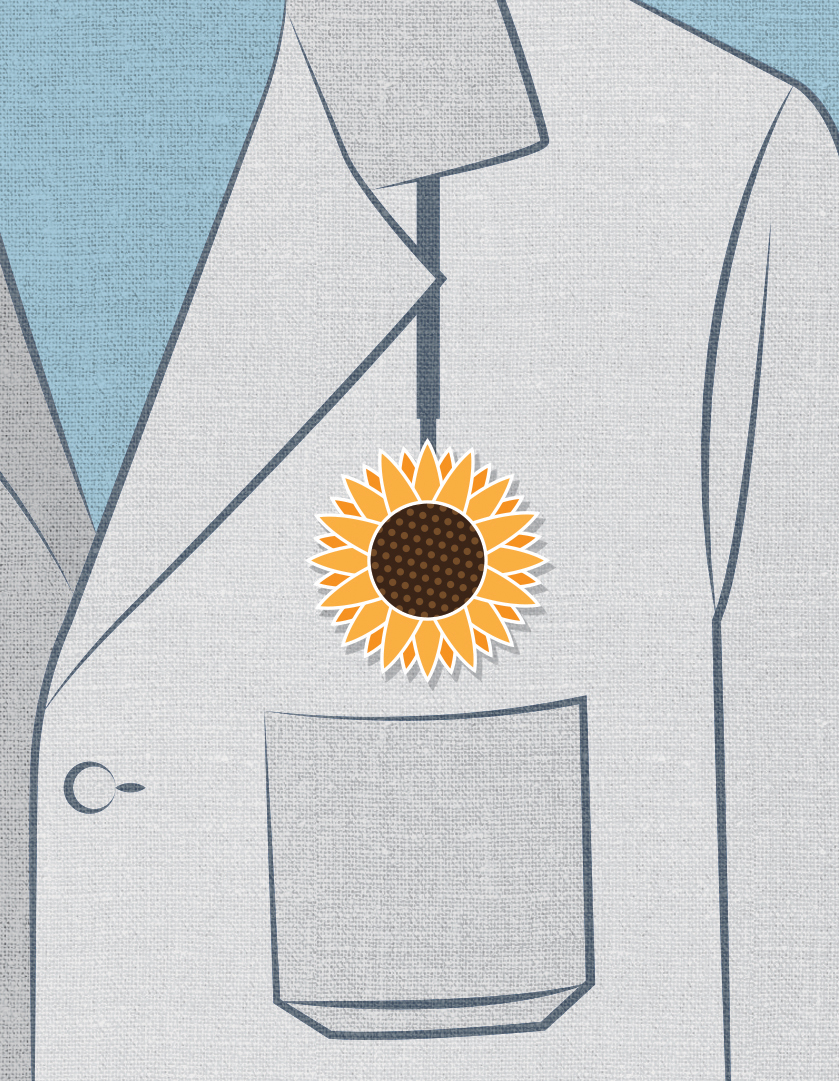Hope Project helps make final months, weeks, days, or hours worth living
To Anna Ferguson, RN, BSN, hopelessness is one of the cruelest symptoms of a terminal illness.
Unsettled at hearing patients facing difficult prognoses remark grimly that “you have left me with no hope,” the hematologic malignancies research nurse began thinking of ways to change a mindset that can cost gravely ill patients any good months, weeks, days, or even moments that might be left. The Hope Project is a product of her determination to offer the dying a reason to keep living. Illustration by Andy Bonner“I was left wondering what ‘hope’ really is,” says Ferguson of a word often avoided in medical settings for fear of creating false hope in patients very likely beyond a cure. “I realized it has to mean something more, and it can’t be reserved for just the curable. It occurred to me that we had a real opportunity to help patients maintain hope, even [during] failed therapies,” adds Ferguson, who works in the Johns Hopkins Sidney Kimmel Comprehensive Cancer Center.
Illustration by Andy Bonner“I was left wondering what ‘hope’ really is,” says Ferguson of a word often avoided in medical settings for fear of creating false hope in patients very likely beyond a cure. “I realized it has to mean something more, and it can’t be reserved for just the curable. It occurred to me that we had a real opportunity to help patients maintain hope, even [during] failed therapies,” adds Ferguson, who works in the Johns Hopkins Sidney Kimmel Comprehensive Cancer Center.
What she realized was that asking the question “What are you hoping for?” – for today, for tomorrow, for next week – can be an incredible door opener.“The process of flushing out what hope means to each individual patient eventually becomes a natural portal into the essential conversations we’re already having about their illnesses, treatments, side effects, and therapies, and it’s extremely therapeutic,” she explains. By focusing on “small, everyday hopes,” the now two-year-old Hope Project, which Ferguson leads, “lets patients know that hope is about them, not their medical outcome.”
“We see patients get knocked down time and again, get back up, and keep fighting thanks to hope. And when there’s no longer medical hope, we can help people refocus their hopes for the remainder of their lives.”
At a November 2012 kickoff event for the project, three patients in their 30s, all with incurable cancers, took part in a discussion that Ferguson says she’ll never forget. “They shared that hope for a cure is not what kept them going. Hope to attend family weddings and kids’ soccer games is what inspired them, got them out of bed, and ultimately gave them quality of life.”Hope Project materials bear a simple symbol, the sunflower, to represent the power of hope and how living things twist and turn toward the sun to get the nourishment, light, and energy they need to thrive. And patients and families aren’t the only ones who benefit from the project’s efforts.
“We get a front-row seat to the best of humanity,” Ferguson explains of nurses at the cancer center. “Patients give us hope. That’s what completes the circle.”“We see patients get knocked down time and again, get back up, and keep fighting thanks to hope. And when there’s no longer medical hope, we can help people refocus their hopes for the remainder of their lives.”
– Anna Ferguson, RN
